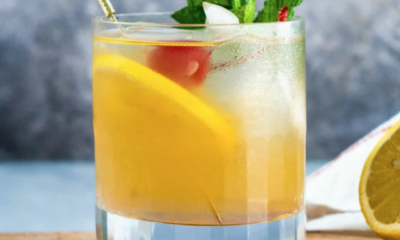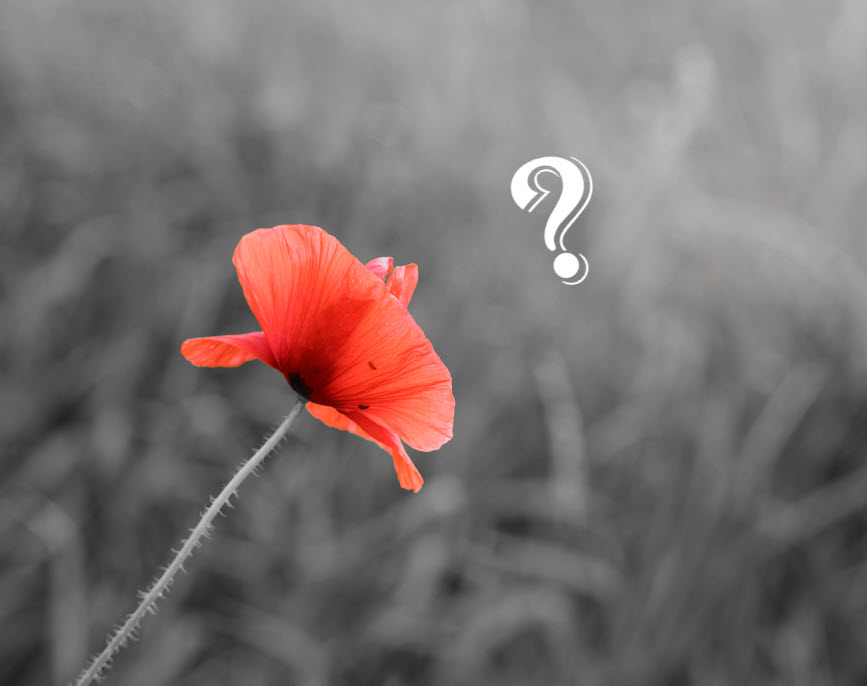Cannabis News
Lifetime Cannabis Use NOT Associated with Later IQ Decline Says New Medical Study
Published
4 months agoon
By
admin

Life Time Cannabis Use not Associated with later IQ Decline (Study)
“Your brain on drugs!” How many times have we heard this phrase, accompanied by the infamous image of an egg frying in a pan? The mantra that “smoking weed kills your brain cells” has been driven into our collective consciousness for decades, repeated by well-meaning parents, teachers, and authority figures alike. It’s not their fault – they were simply passing along what they believed to be scientific truth.
However, reality paints a different picture. Some of our greatest minds have been cannabis enthusiasts. Carl Sagan, the legendary astrophysicist and science communicator, was a passionate advocate for cannabis. Steve Jobs credited his cannabis experiences as highly influential to his creative process. Even Shakespeare may have sparked up a bowl or two, with traces of cannabis found in pipes excavated from his garden. Today, countless professionals, from Silicon Valley engineers to medical researchers, incorporate cannabis into their lives while maintaining razor-sharp cognitive abilities.
Now, I’m not suggesting cannabis is completely harmless – everything we consume carries potential risks. Even drinking too much water can lead to hyponatremia, a potentially fatal condition. The key lies in understanding real versus perceived risks, separating fact from fiction, and making informed decisions based on evidence rather than fear-mongering.
The notion that smoking cannabis inevitably leads to lower IQ has been repeated so often it’s taken on a life of its own. But what does the science actually say? A fascinating new study from Denmark, following over 5,000 men across four decades, has not only challenged this assumption but turned it on its head. Surprisingly, the research suggests that cannabis users experienced less cognitive decline over time compared to their non-using counterparts.
Let’s take a deep dive into this groundbreaking research and examine what it means for our understanding of cannabis’s long-term effects on cognitive function. Buckle up, fellow cannabis enthusiasts and skeptics alike – you might be surprised by what the data reveals about your favorite herb’s relationship with your gray matter.
The Danish study, published in the journal Brain and Behavior, tracked an impressive cohort of 5,162 men over more than four decades. What makes this research particularly compelling is its longitudinal nature – participants’ IQs were first assessed in early adulthood (average age 22) and then again in late midlife (average age 62). This extensive time frame provides a robust window into the long-term cognitive effects of cannabis use.
The findings were eye-opening. Not only did cannabis users fail to show increased cognitive decline, but they actually demonstrated “significantly less cognitive decline” compared to non-users. While the average cognitive decline across all participants was 6.2 IQ points over the 44-year period, cannabis users showed 1.3 fewer IQ points of decline than non-users – even after controlling for potential confounding factors.
“Among cannabis users, no significant associations with age-related cognitive decline could be demonstrated for age of initiation of cannabis use,” the researchers noted. This is particularly interesting because it challenges the common assumption that early cannabis use is especially harmful to cognitive development.
These results don’t stand alone. A British study of over 2,000 teenagers found no link between cannabis use before age 15 and lower IQ scores once confounding factors were controlled for. Similarly, studies of adolescent twins have consistently failed to demonstrate any causal relationship between cannabis use and cognitive decline. A recent review in JAMA Psychiatry even concluded that any cognitive deficits associated with cannabis use typically disappear after 72 hours of abstinence.
The importance of longitudinal studies like these cannot be overstated. Unlike short-term studies that might capture temporary effects, these long-term investigations reveal the true trajectory of cognitive function over time. They also allow researchers to control for various life factors that might influence cognitive performance.
Interestingly, these findings stand in stark contrast to similar longitudinal research on alcohol consumption. A Swedish study of 49,321 males found that lower IQ scores were associated with higher alcohol consumption, both in terms of total intake and binge drinking patterns. Even more telling, lower adolescent IQ scores predicted moderate to high alcohol consumption in middle age. The research showed an increased odds ratio of 1.20 for every step decrease on the IQ scale for being a high consumer versus a light consumer of alcohol.
This comparison raises some fascinating questions. While alcohol use shows a clear negative correlation with IQ scores, cannabis use appears to have no such relationship – and might even be associated with better cognitive preservation over time. Could this suggest that the societal stigma against cannabis has been misplaced, while the risks of alcohol have been underappreciated?
Of course, correlation doesn’t equal causation, and more research is needed to fully understand these relationships. However, these findings strongly suggest that the traditional narrative about cannabis “killing brain cells” or causing inevitable cognitive decline needs serious revision. As NORML’s Deputy Director Paul Armentano noted, “These results contradict one of the more prominent and longstanding stereotypes about cannabis and cannabis consumers.”
While it’s certainly reassuring to know that your weekend wake-and-bake sessions aren’t turning your brain to scrambled eggs, these findings carry far more weight than mere personal validation. Studies like these serve as cornerstones in policy-making, with lawmakers frequently citing scientific research to justify their positions on cannabis legislation.
The relationship between research and policy is precisely why we should scrutinize who funds these studies and to what end. Major corporations routinely pour billions into research designed to support their interests – just look at how tobacco companies spent decades funding studies that downplayed or denied the links between smoking and cancer. Similar tactics were employed by fossil fuel companies regarding climate change, and pharmaceutical companies concerning the addictiveness of opioids.
This Danish study adds another significant weight to the scale of cannabis liberation, tipping it further toward societal acceptance and integration. We’ve been battling a tsunami of misinformation since the 1930s, when Harry Anslinger first orchestrated his racially-motivated campaign against “marijuana.” Remember Dr. Robert Heath’s infamous monkey studies? The ones where he essentially suffocated primates with cannabis smoke and then blamed their brain damage on the plant itself? This kind of pseudo-science has been the cornerstone of prohibition for generations.
The government’s bias becomes glaringly apparent when you examine their research funding patterns. For decades, an astounding 90% of all government-funded cannabis research has focused exclusively on finding potential harms and dangers. This isn’t scientific inquiry – it’s a witch hunt with a lab coat. Less than 10% of research funding was allocated to exploring therapeutic benefits or industrial applications, despite hemp’s remarkable versatility and cannabis’s documented medicinal properties.
But here’s the beautiful irony – despite this coordinated campaign of suppression and misinformation, truth has a way of breaking through like a persistent cannabis plant growing through cracks in the concrete. Each new legitimate study that debunks these old myths serves as another crack in the foundation of prohibition.
The Danish study isn’t just about IQ scores or cognitive decline. It represents another victory in the larger battle for truth in cannabis science. It stands alongside other research that has already debunked claims about cannabis being a “gateway drug,” causing lung cancer, or leading to widespread social decay. Each of these evidence-based refutations chips away at the edifice of prohibition built on decades of deliberate misinformation.
Policy is ultimately a matter of perspective, shaped by the information we choose to acknowledge and act upon. While the unholy alliance of government agencies and private interests has long tried to maintain cannabis prohibition through selective research and fear-mongering, their narrative is crumbling in the face of objective scientific inquiry. The truth about cannabis is finally emerging, not because the powers-that-be want it to, but because it’s becoming too obvious to suppress any longer.
I think it’s time we put the “cannabis kills brain cells” myth in the same dustbin as Reefer Madness and gateway drug theory. Not only does cannabis not turn your gray matter into Swiss cheese, but this latest research suggests that cannabis users might actually maintain their cognitive function better over time than their non-using counterparts. Who would have thought that decades of government propaganda might have gotten it completely backwards?
But here’s the thing – we shouldn’t even need these kinds of studies to justify cannabis use. The fact that we’re still debating whether cannabis makes you “dumb” while alcohol – a substance that demonstrably destroys brain tissue, leads to violent behavior, and kills thousands annually – remains socially acceptable and celebrated is a testament to the power of cultural programming and corporate interests.
Let’s be real: cannabis is objectively less harmful than alcohol by virtually every metric we can measure. It’s less addictive, you can’t fatally overdose on it, it doesn’t generally lead to violence or risky behavior, and now we know it doesn’t turn your brain to mush either. Yet somehow, in much of the world, you’re still considered a criminal if you prefer a joint to a martini.
While this Danish study adds another brick to the wall of evidence supporting cannabis liberation, the real issue isn’t about proving cannabis is safe – it’s about recognizing our fundamental right to cognitive liberty. The right to decide what substances we use to alter our consciousness should be a basic human freedom, not something we need to justify with IQ scores and brain scans.
Still, in a world where policy decisions are supposedly based on scientific evidence, every study that chips away at the edifice of prohibition brings us one step closer to full cannabis liberation. Let’s hope this research helps accelerate that process. After all, it doesn’t take a genius to figure out that cannabis prohibition has always been more about control than public health – and now we have the IQ points to prove it.
INSPIRATION:
https://norml.org/blog/2024/11/15/study-cannabis-use-not-associated-with-later-iq-decline/
YOUR IQ AND CANNABIS USE, READ ON…
You may like
-


Karma Koala Podcast 247: Speaking with Dr. Natalie Corthésy senior lecturer university of West Indies & Enrico Bonadio professor of law City St George’s University of London about their forthcoming Edward Elgar title, “Intellectual Property and Cannabis”
-


MJBizCon offers speakers chance to share cannabis insights, shape industry
-


The Best Tariff Friendly Cocktails
-


Cannabis Consumers Are Being Hit By The Tariffs
-


The Best Tips To Update Your Wardrobe
-


Former New York Knick Iman Shumpert debuts ‘TSA Approved’ legal cannabis brand
Cannabis News
Scientists Now Think That One Compound in the Cannabis Plant Can Replace All Opiates
Published
1 day agoon
April 3, 2025By
admin

Which Cannabis Compound Do Scientists Think Can Replace Opiates?
…And Why This Is Important
Opiates are a type of pharmaceutical drug that’s been made from the opium poppy plant. While it’s somewhat a ‘natural’ substance that’s been extracted from the fibers and sap of the opium poppy plant, these are extremely dangerous sedatives that act on the central nervous system. However, there are completely synthetic opioids as well, which are manufactured entirely in laboratories.
Famous examples of well-known and widely-used opiates today include heroin, codeine, and morphine. They all work similarly, binding to the brain’s opioid receptors and users feel a drastic reduction in pain. It also causes users to feel euphoric, drowsy, or sleepy. Common side effects include constipation and nausea.
Because opiates are powerful for dulling one’s pain perceptions, they have become commonly prescribed by doctors and hospitals for pain relief. That said, opiates have become one of the world’s most addictive, dangerous, and fatal drugs – and you can get prescribed it right by your very own physician. Repeated use of opiates can easily lead to dependence and addiction, and eventually consuming high doses can drastically slow down breathing, and cause brain damage, or even death.
Since doctors still keep prescribing opioids, this has resulted in the deadly Opioid Epidemic, which has killed thousands of people. It’s a worrisome public health crisis, most especially because of fentanyl, an illegally manufactured opioid which is said to be 50 times more potent than heroin.
Could The Answer To The Opioid Epidemic Lie In Cannabis…Terpenes?
The past few years have shown that cannabis legalization is critical for surviving the opioid epidemic, and reducing overall opioid consumption.
The results of a recent research paper, which builds on past studies conducted by Dr. John Streicher, who is a member of the Comprehensive Center for Pain and Addiction, reveals fascinating findings. According to Streicher, cannabis terpenes were found to provide relief in inflammation models as well as on neuropathic pain caused by chemotherapy.
For the study, Streicher and his research team analyzed 4 kinds of terpenes that are found in mid to high levels in Cannabis sativa plants: linalool, geraniol, beta-caryophyllene, and alpha-humulene. They discovered that each terpene produced significant pain relief among mice subjects with fibromyalgia and post-operative pain, and among the terpenes, geraniol was found to be the most powerful.
“Our research is showing that terpenes are not a good option for reducing acute pain resulting from an injury, such as stubbing your toe or touching a hot stove; however, we are seeing significant reductions in pain when terpenes are used for chronic or pathological pain,” he said. “This study was the first to investigate the impact of terpenes in preclinical models of fibromyalgia and post-operative pain and expand the scope of potential pain-relieving treatments using terpenes,” Streicher said.
Cannabis terpenes are the compounds responsible for the aromatic profile of each strain; they are located in the plant trichomes. Not only do they contribute to each strain’s unique flavor and odor, but they also have valuable therapeutic and medicinal benefits. There are around 150 kinds of terpenes known today, though in the entire plant world, there are known to be some 20,000 terpenes.
Understanding the therapeutic benefits of terpenes is incredibly valuable also because they don’t contain THC (tetrahydrocannabinol), the compound in marijuana that gets you high.
“With fibromyalgia, there isn’t much of an understanding of what the pain state is, and there are not a lot of great options for treating it,” explains Streicher. “Our findings show that terpenes may be a viable treatment option for fibromyalgia pain, which could potentially have a large impact and make a difference for an under-treated population.”
Other Studies
This is not the first time that cannabis terpenes have been found to demonstrate excellent pain-relieving properties. It must be noted that just like what Streicher says, terpenes seem to do better with chronic pain management, instead of acute pain management.
Another study from 2024, which was published in The Journal of the Association for the Study of Pain, was conducted by researchers at the University of Arizona and the National Institutes of Health. The investigators analyzed the analgesic properties of different terpenes including geraniol, humulene, linalool, pinene, and caryophyllene among mice subjects with chemotherapy-induced peripheral neuropathy.
According to the researchers, all the terpenes delivered analgesic effects that were equivalent to around 10 mg/kg of morphine. It was also interesting to note that administering both morphine and terpenes together at low doses resulted in ‘enhanced’ pain-killing effects.
“Together these studies identify cannabis terpenes as potential therapeutics for chronic neuropathic pain,” said the investigators.
There have also been other studies that have found that combining cannabis with opioids can indeed provide long-lasting pain relief. It comes with the added benefit of reducing opioid doses needed for effective pain control. This phenomenon is called opioid-sparing. These types of protocols can be beneficial for patients who suffer from severe, chronic pain caused by cancer, arthritis, joint problems, fibromyalgia, diabetes, post-surgical pain, migraines, nerve damage, and so much more.
Conclusion
Learning more about the pain-killing properties of terpenes is extremely valuable for the medical community, patients, and even society as a whole. We can all do with less opioid addictions because it has torn families apart, and caused the deaths of thousands of people.
Terpenes, or cannabis in general, offer a natural and safe alternative that can be complementary to other pharmaceutical treatments designed to reduce pain.
SWAPPNG OPIOIDS FOR CANNABIS, READ ON…


Cannabis and the Authoritarian State
Cannabis has been legal for longer than it has been illegal. Let that sink in for a minute. For thousands of years, humans cultivated and consumed cannabis freely across civilizations and continents. It wasn’t until the early 1900s that we witnessed a massive push to drive hemp and cannabis into the black market, primarily due to industrial competition from petrochemicals, pharmaceuticals, and other industrial applications.
What makes cannabis so threatening to powerful interests? For starters, hemp and cannabis are highly versatile crops with over 50,000 different uses, from medicine to textiles to fuel. Even more remarkable is how this plant is hardwired to work with the human body through our endocannabinoid system—a biological network we didn’t even discover until the 1990s.
Perhaps most threatening of all is that cannabis is insanely easy to grow. This means that if the plant helps you with a particular physical ailment, you have the ability to grow your own medicine indefinitely. No insurance premiums, no wait lists, no pharmaceutical middlemen—just you cultivating your own healing directly from the earth.
Authoritarians do not like this, not one bit. When people can meet their own needs independently, power structures lose their grip. When citizens can think differently without permission, control systems begin to fail. So today, we’re going to look at the interesting relationship between authoritarianism and cannabis, and how this humble plant plays a key role in keeping you free.
We’ve already established the versatility of cannabis, but there’s another element that those old D.A.R.E. PSAs inadvertently reveal about what authoritarians think about cannabis. I’m talking, of course, about “behavior.” You see, in an authoritarian system, you and I are but cogs in the machine. We’re the expendables who should be proud to work ourselves to death for our “fearless leaders.”
This is precisely why certain ideas, philosophies, religions, movements, books, and substances are typically banned in authoritarian regimes. Take North Korea as an example: everything from the type of television citizens watch to the music they hear is a tightly spun spell designed to keep the populace in check. While they don’t have explicit laws against hemp (they actually grow it industrially), smoking psychoactive cannabis is strictly forbidden.
Contrast this with places like Malaysia, where you can get up to 5 years for possessing just 20 grams of cannabis, and even face the death penalty depending on the situation. These authoritarians don’t play around when it comes to cannabis because they know it affects the behavior of their populace in ways they can’t control.
The question becomes: what behavior do they fear so much that cannabis produces within the individual?
The answer is a critical mind. People who consume cannabis often begin to question their own belief systems. Most regular users undergo some transformation in their values and perspectives. Cannabis has a unique way of helping people see beyond cultural programming and think outside established paradigms. It can make the familiar strange and the strange familiar—a psychological state that’s antithetical to authoritarian control.
This independent thinking runs counter to the narrative of authoritarians who wish to maintain a tight grip on social consciousness. If even 10% of a population begins to pivot in their behavior within a regime, it can have massive ripple effects. Just look at cannabis in the US—it went from being demonized to being embraced by the majority in less than 80 years, despite massive propaganda efforts.
For authoritarians, psychoactive cannabis isn’t primarily a threat to public health and wellbeing—it’s a threat to the health and wellbeing of authoritarianism itself. When people start thinking differently, they start living differently. When they start living differently, they start demanding different. And that’s the beginning of the end for any system built on unquestioning obedience.
Beyond the threat to thought control, there’s another reason why drugs in general remain illegal: the state can use prohibition as a weapon against the populace. This isn’t conspiracy theory—it’s documented history.
Take Nixon’s war on drugs. His domestic policy chief, John Ehrlichman, later admitted: “We knew we couldn’t make it illegal to be either against the war or black, but by getting the public to associate the hippies with marijuana and blacks with heroin, and then criminalizing both heavily, we could disrupt those communities.” Nixon essentially placed cannabis on the Controlled Substances Act because he needed an excuse to shut down anti-war protests and target Black communities.
Since hippies and anti-war protesters were smoking “freedom grass,” making it illegal would circumvent their freedom of speech and freedom of assembly, and more importantly—turn free citizens into state property. It’s a win-win if you’re an authoritarian looking to silence dissent.
Then there’s the whole “boogeyman” complex that prohibition creates. We’re told “drug dealers” are roaming the streets preying on innocents, giving them “marihuanas” so they can do vile things. What the government conveniently leaves out is how the banks these “dealers” use to launder their money remain untouched. They don’t mention the shadier dealings of law enforcement either—like running guns into Mexico (eventually leading to the death of one of their own), or spraying poison on crops, killing and hospitalizing people because, you know…”Drugs are bad!”
Authoritarians cannot let go of the value that keeping the most widely used illicit substance in the world illegal provides them. This explains why the US hasn’t federally legalized cannabis despite nearly 80% of Americans supporting some form of legalization. It’s not because they don’t have enough research or that they’re genuinely concerned about public health—it’s because prohibition gives them all the privileges of violating constitutional rights while siphoning money into their coffers.
Drug prohibition creates a perpetual enemy that can never be defeated, allowing endless justification for surveillance, militarized police, asset forfeiture, and expansion of state power. What authoritarian could resist such a convenient tool?
Cannabis is a plant. You can’t make nature illegal—it’s counter to the human experience. When governments attempt to criminalize a naturally occurring organism that humans have cultivated and used for thousands of years, they reveal the absurdity of their position and the limits of their authority.
While the United States isn’t a full-on authoritarian state (yet), the truth is that many authoritarian elements have played out over the years. You only need to look as far as the war on drugs to see how the state utilizes prohibition as a weapon to their advantage. From no-knock raids to civil asset forfeiture to mass incarceration, drug laws have erected a parallel legal system where constitutional protections often don’t apply.
The fundamental truth is that cannabis is not only versatile and medicinal, it gives you back your autonomy in multiple ways. It helps you think for yourself. It allows you to grow your own medicine. It connects you with a plant that humans have used ceremonially, medicinally, and industrially throughout our history. And this autonomy is something authoritarians cannot stand—free individuals who know how to think beyond the narratives they’re fed.
Cannabis doesn’t just get you high—it offers a perspective from which the absurdities of prohibition become glaringly obvious. Perhaps this is why, as state after state legalizes, we’re witnessing the slow but steady unraveling of one of the most enduring authoritarian policies in American history.
So if you count yourself among those who value freedom of thought and bodily autonomy, who believe that nature doesn’t require government permission, and who understand that true liberty includes the right to explore your own consciousness—well, maybe it’s time to toke one up for freedom!
LEGALIZING CANNABIS IS NOT ENOUGH, READ ON..
Cannabis News
Stop Using Bat Poop to Fertilize Your Weed Plants Immediately, Here is Why…
Published
3 days agoon
April 1, 2025By
admin

Don’t Fertilize Your Weed with Bat Poop
Fertilization is a critical step for growing healthy marijuana plants.
They help provide essential nutrients for marijuana in various stages of growth, while promoting plant growth. There are dozens of different fertilizers to choose from in the market; growers can choose based on budget, nutrients needed, location, season, and much more. But not all fertilizers are made equally – of course, some are of better quality than others.
That said, there are some rather unusual fertilizers that can be used on plants. These may include, but are not limited to: coffee, milk, grass clippings, banana peels, fish tank water, potato water, and even urine! Yes, it does sound strange, but to gardening enthusiasts, there is nutritional value to be found in each of these things, which can make them suitable fertilizers depending on the circumstances.
For example, grass clippings make excellent mulch and can provide potassium, nitrogen, and phosphorus. Urine is a potent source of nitrogen as well as phosphorus. Banana peels are rich in calcium, which is excellent for promoting root growth while helping supply oxygen to the soil.
But what about bat poop? Also known as guano, bat poop has been said to work as a plant fertilizer because it’s rich in nitrogen, potassium, phosphorus, and other nutrients. Unfortunately, using bat poop as a plant fertilizer can also be dangerous. So if you don’t really know what you are doing, bat poop as a fertilizer can be extremely risky.
Bat Poop Fertilizer Kills 2 NY Men
On December 2024, news of two men hailing from Rochester, New York, dying went viral.
The cause of death was dangerous fungus, in the bat poop that they were using to fertilize their marijuana plants. Both men grew their own marijuana plants for medical consumption, but unfortunately developed histoplasmosis after breathing toxic fungal spores from the guano.
One of the men was aged 59 years old; he bought bat poop online to use as fertilizer for his plants. Meanwhile, the other was a 64-year-old male who found guano in his attic, then decided to use it to fertilize his cannabis plants. They both developed similar symptoms, including chronic coughs, fever, severe weight loss, and respiratory failure. The case was also discussed in the Open Forum Infectious Diseases medical journal.
Is there a safe way to use bat poop as fertilizer? If you ask me, I truly can’t understand why one would use guano as fertilizer when there are so many other proven safe alternatives out there that are simply not as risky. According to the University of Washington, one must always wear a dust mask each time you open a bag containing soil amendments. That’s because a mask will greatly decrease the chances of breathing in fungal spores, which could be potentially dangerous. They also go on to explain that yes, guano is indeed used as fertilizer for its valuable nitrogen content but it still isn’t without its own risks, particularly of developing Histoplasma – the same condition that killed the two men.
Make Your Own Safe Fertilizers At Home
There are many other safe, affordable – and even free – fertilizers you can feed your marijuana plants with. It doesn’t have to cost a fortune nor does it have to be risky to your health.
Check out these easy, low-cost, DIY fertilizers for weed:
-
Coffee grounds are abundant in nitrogen, which makes it perfect for the vegetative stage of marijuana plants. They are also a fantastic source of organic materials and green waste, which contain other vital nutrients. When the coffee grounds decompose, they create soil aggregates that improve soil aeration and its water retention capabilities.
Mix around 2 grams of coffee ground for every liter of soil. Measuring its pH levels is also helpful, since you want it to be between 6 to 6.5
-
Crushed eggshells are a great way to ensure no eggshells go to waste. It’s rich in calcium plus other minerals that are effective in improving overall plant structure, health, and growth. In fact, so many gardeners and farmers commonly use crushed eggshells to help boost plant growth – and it will work just as well for marijuana plants.
They’re really easy to use, too! Just mix eggshells into the soil, or steep them into water then pour into the soil for a calcium-packed feed.
-
Banana tea or water is rich in potassium and magnesium, making it perfect as a feed during the marijuana plant’s flowering stage. You can use banana peels differently: with 3 to 5 banana peels, soak it in water for 2 days. Then you can use the water on your plants, and even leave the banana peels as compost for your garden.
-
Wood ash from your fireplace or other sources is a great source of phosphorus and potassium. Simply sprinkle some wood ash over marijuana during the final flower phase. Just use 1 or 2 grams of ash for every liter of substrate. Be careful not to use too much wood ash, or it can make the soil too alkaline.
-
Animal manure, such as those from cows, rabbits, or horses, make excellent organic fertilizers. Just be sure that they’re composed properly so that you avoid introducing weed seeds, or pathogens.
These low-cost fertilizers are also natural and effective. There’s no reason for you to turn to bat poop as fertilizer, even if you’re in a bind.
Conclusion
Guano or bat poop is a poor choice of fertilizer if you don’t know what you are doing. It’s risky and potentially dangerous – just not worth it. Instead, fertilize your marijuana plants with these options mentioned.
BEST POOP FOR CANNABIS PLANTS, KEEP READING…

Karma Koala Podcast 247: Speaking with Dr. Natalie Corthésy senior lecturer university of West Indies & Enrico Bonadio professor of law City St George’s University of London about their forthcoming Edward Elgar title, “Intellectual Property and Cannabis”

MJBizCon offers speakers chance to share cannabis insights, shape industry

The Best Tariff Friendly Cocktails

Cannabis Consumers Are Being Hit By The Tariffs

The Best Tips To Update Your Wardrobe

Former New York Knick Iman Shumpert debuts ‘TSA Approved’ legal cannabis brand

How New York pot pioneers made it to legal dispensary shelves

Scientists Now Think That One Compound in the Cannabis Plant Can Replace All Opiates

Vladimir Bautista is leading Happy Munkey’s legacy-to-legal takeover

Cannabis Can Help A Sore Throat

Distressed Cannabis Business Takeaways – Canna Law Blog™

United States: Alex Malyshev And Melinda Fellner Discuss The Intersection Of Tax And Cannabis In New Video Series – Part VI: Licensing (Video)

What you Need to Know

Drug Testing for Marijuana – The Joint Blog

NCIA Write About Their Equity Scholarship Program

It has been a wild news week – here’s how CBD and weed can help you relax

Cannabis, alcohol firm SNDL loses CA$372.4 million in 2022

A new April 20 cannabis contest includes a $40,000 purse

Your Go-To Source for Cannabis Logos and Designs

UArizona launches online cannabis compliance online course
Trending
-

 Cannabis News2 years ago
Cannabis News2 years agoDistressed Cannabis Business Takeaways – Canna Law Blog™
-

 One-Hit Wonders2 years ago
One-Hit Wonders2 years agoUnited States: Alex Malyshev And Melinda Fellner Discuss The Intersection Of Tax And Cannabis In New Video Series – Part VI: Licensing (Video)
-

 Cannabis 1012 years ago
Cannabis 1012 years agoWhat you Need to Know
-

 drug testing1 year ago
drug testing1 year agoDrug Testing for Marijuana – The Joint Blog
-

 Education2 years ago
Education2 years agoNCIA Write About Their Equity Scholarship Program
-

 Cannabis2 years ago
Cannabis2 years agoIt has been a wild news week – here’s how CBD and weed can help you relax
-

 Marijuana Business Daily2 years ago
Marijuana Business Daily2 years agoCannabis, alcohol firm SNDL loses CA$372.4 million in 2022
-

 California2 years ago
California2 years agoA new April 20 cannabis contest includes a $40,000 purse







